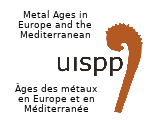Synopsis through out of studying the technological know-how and provenance of clayey based materials are still ongoing scientific approaches. Scientific strategies were delivered significant insights by means of routinely used laboratory methods, as well as high prestigious synchrotron facilities. Pottery in its diverse types and functionality is a container used to represent, maintain, preserve and melt (mainly metals and glasses) which have regularly been adjusted by the alchemist, metallurgist, glassmaker, architectures during a very long way of human history. Potteries were practically represented the concept of “Chaîne Opératoire” in term of raw materials and manufacturing processes came into use from prehistory to describe traditions, cultures and ethnicities. Potteries almost were a framework for fusion, transformation, even metamorphosis by exchanges and combinations. In archaeology and archaeological sciences, pottery and ceramic are metaphor used to elect a society becoming industrialised and communal, in regard to the diverse technological expertise combining to form a typical tradition and collective culture.
Some pottery sherds from the area of fortification of Persepolis (Achaemenid 550–330 BC) and Ardeshir-Khore (4th century A.C., early Islamic period) have been studied to characterize their manufacturing technology, and provenance. Potteries have been studied via routinely microscopically analytical techniques (optical- and scanning electron microscopy), X-ray diffraction and thermal analysis in order to determine chemical- mineralogical phase constituents and firing temperature. Cathodoluminescence microscopy is favoured for estimating the firing regime in potteries through mineralogical phase decomposition within the matrices, and characterizing specific neo-formed crystalline phases to interpret about provenance. As a complimentary method, cathodoluminescence microscopy provides considerable clues for discriminating heating-interval within the matrix of potteries, and provenance of additives by means of their typical cathodoluminescence color character. Based on the results, earthen ware potteries from the fortification of Persepolis had local origin, were fired in different stages. In contrast, firing process for creating stone ware (celadons) from Ardeshir Khore does not remained constant, however particularised by means of completed sintering.

 PDF version
PDF version
